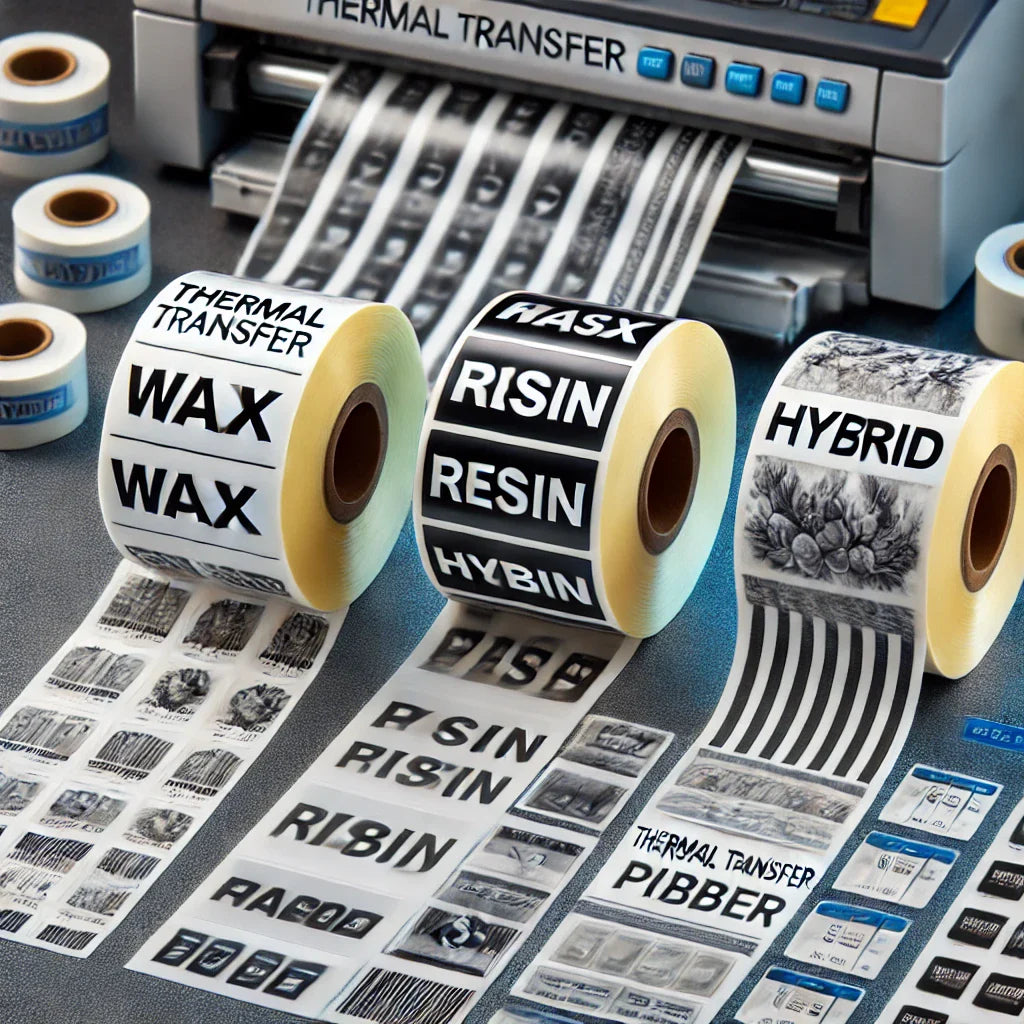When it comes to thermal transfer labels, choosing the right ribbon is crucial to achieving high-quality, durable prints. Whether you're printing custom thermal labels, 4x6 thermal transfer labels, or specialized thermal printing labels, selecting the right ribbon type ensures optimal performance. But with so many options—wax, resin, and hybrid—how do you decide which one best suits your needs?
In this guide, we’ll explore the differences between wax, resin, and hybrid ribbons, their advantages, and the best use cases for each.
1. Wax Ribbons: Affordable and Versatile
Wax ribbons are the most economical option for printing thermal labels, making them ideal for general-purpose applications where longevity isn't the highest priority.
Benefits of Wax Ribbons:
- Cost-effective and widely available
- Suitable for high-speed printing
- Works well on 4 x 6 thermal transfer labels and paper-based materials
- Great for short-term use and indoor applications
Best Use Cases:
- Shipping labels
- Retail tags and barcodes
- Inventory management stickers
- Temporary labeling needs
How to Use:
- Pair with paper-based thermal transfer label stock
- Avoid use in harsh environments where moisture or chemicals may be present
2. Resin Ribbons: High Durability for Harsh Environments
For industries requiring long-lasting and highly resistant custom thermal transfer labels, resin ribbons are the top choice. They offer superior durability, making them perfect for labels exposed to extreme conditions.
Benefits of Resin Ribbons:
- Highly resistant to chemicals, moisture, and abrasion
- Ideal for synthetic labels and color thermal transfer labels
- Long-lasting print quality, even in outdoor or industrial settings
Best Use Cases:
- Medical and pharmaceutical labels
- Automotive and industrial equipment tags
- Chemical drum labeling
- Outdoor signage
How to Use:
- Use with synthetic thermal transfer labels for best results
- Ensure your heat transfer label printer supports resin ribbons
3. Hybrid (Wax-Resin) Ribbons: The Best of Both Worlds
If you need a balance between affordability and durability, hybrid ribbons (also called wax-resin ribbons) offer a versatile solution. These ribbons provide enhanced print quality and resistance compared to wax ribbons but at a lower cost than resin ribbons.
Benefits of Hybrid Ribbons:
- More durable than wax ribbons but less expensive than resin ribbons
- Works well on both paper and synthetic thermal printing labels
- Smudge-resistant and capable of withstanding light exposure to chemicals and moisture
Best Use Cases:
- Food and beverage labeling
- Logistics and warehouse tags
- Healthcare product labels
- Retail product packaging
How to Use:
- Ideal for both paper and synthetic thermal labels
- Suitable for applications that require moderate durability
How to Choose the Right Ribbon for Your Needs
When selecting a ribbon for your thermal transfer label, consider the following:
- Label Material: Paper labels pair well with wax ribbons, while synthetic labels require resin or hybrid ribbons.
- Application Conditions: If labels will be exposed to chemicals, heat, or moisture, resin is the best option.
- Cost vs. Durability: Wax is the most affordable but lacks durability; resin is the most durable but costs more, while hybrid offers a middle ground.
- Printer Compatibility: Ensure your heat transfer label printer is compatible with the ribbon type you choose.
Final Thoughts: Optimize Your Thermal Label Printing
Choosing the right ribbon for your custom thermal transfer labels is essential for ensuring print quality and label longevity. Whether you need 4x6 thermal transfer labels for shipping, color thermal transfer labels for branding, or durable industrial labels, selecting the correct ribbon type will make all the difference.
Looking for high-quality thermal transfer labels and ribbons? Explore our selection today and get the perfect match for your printing needs!

